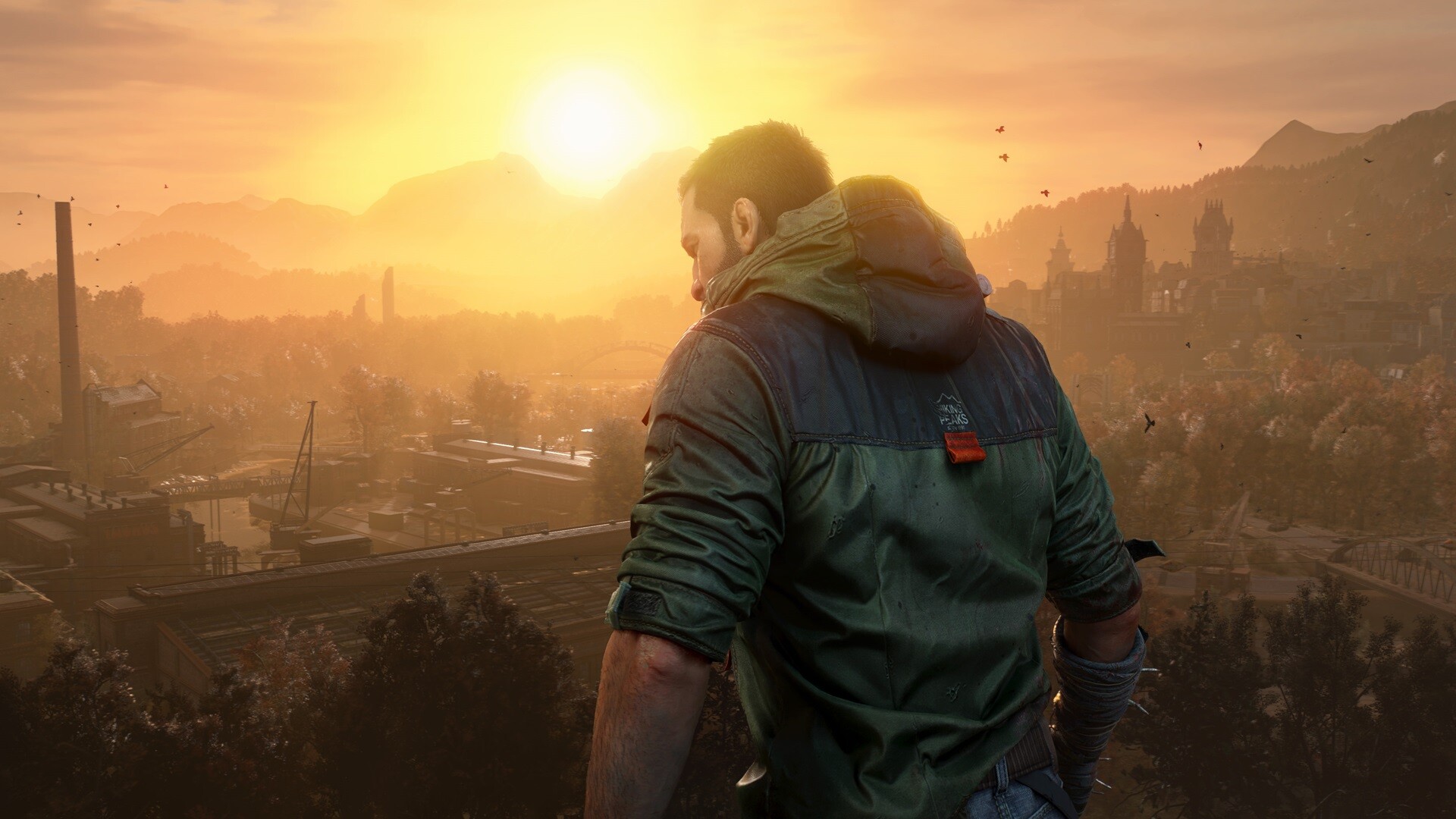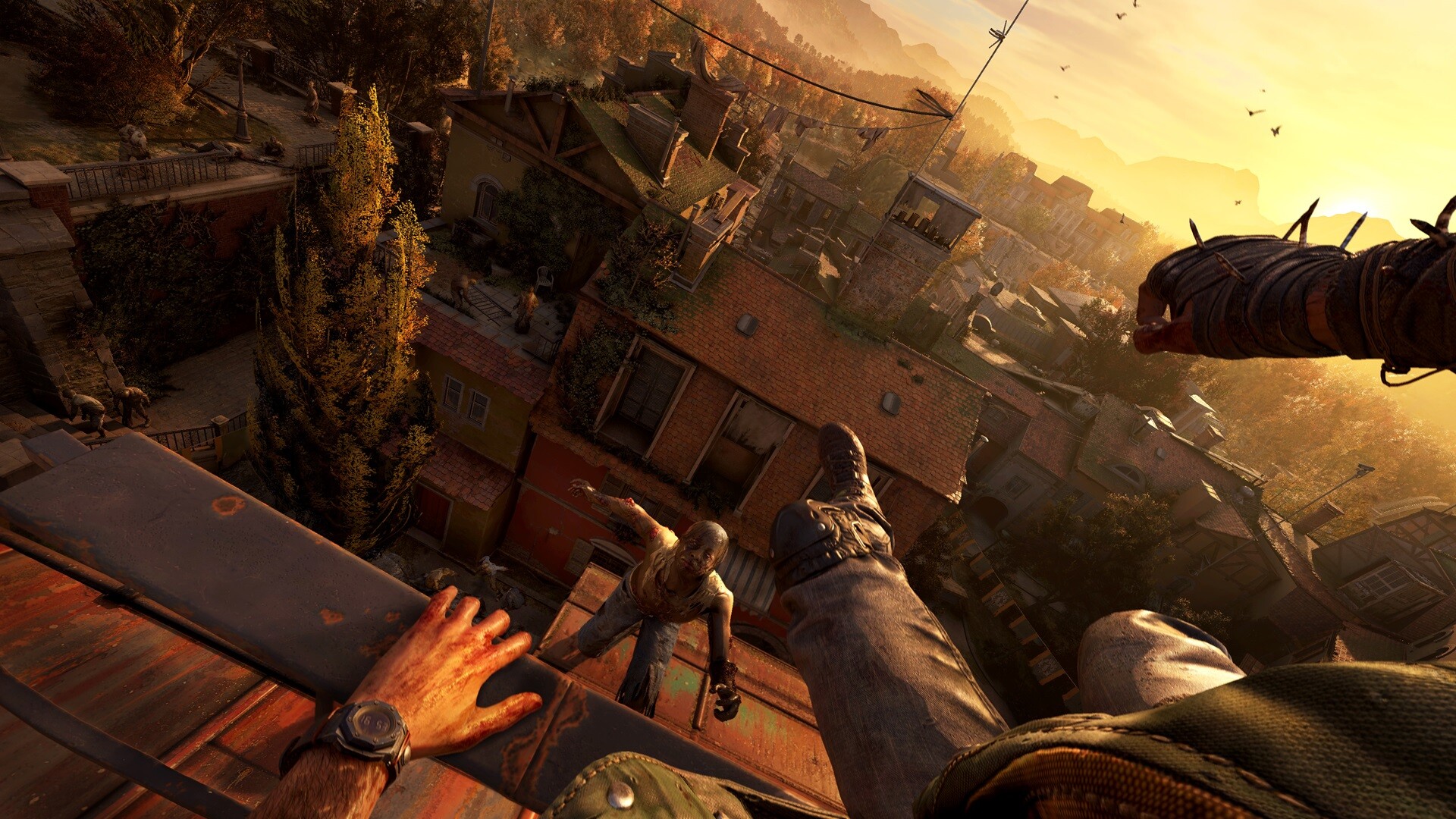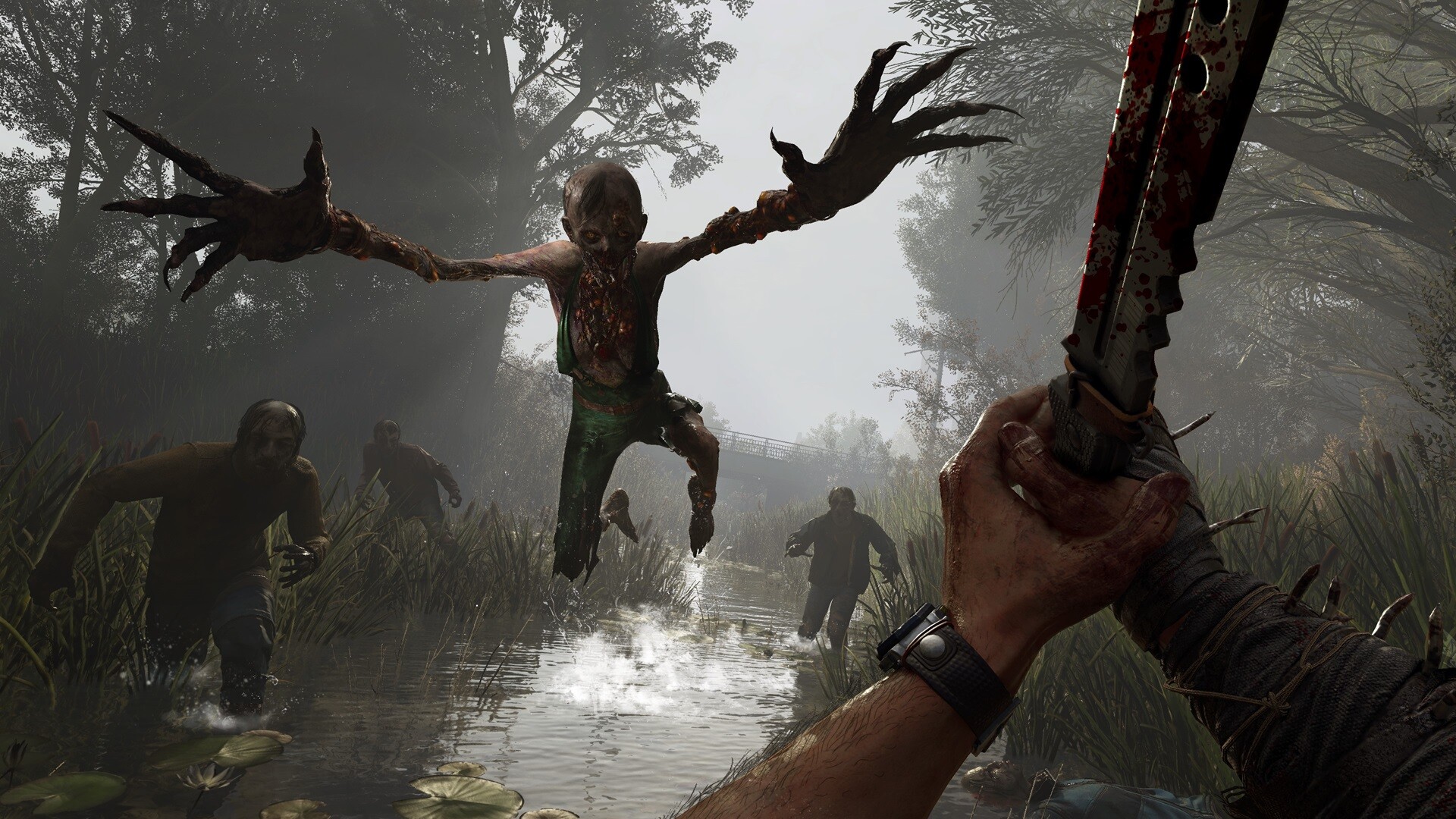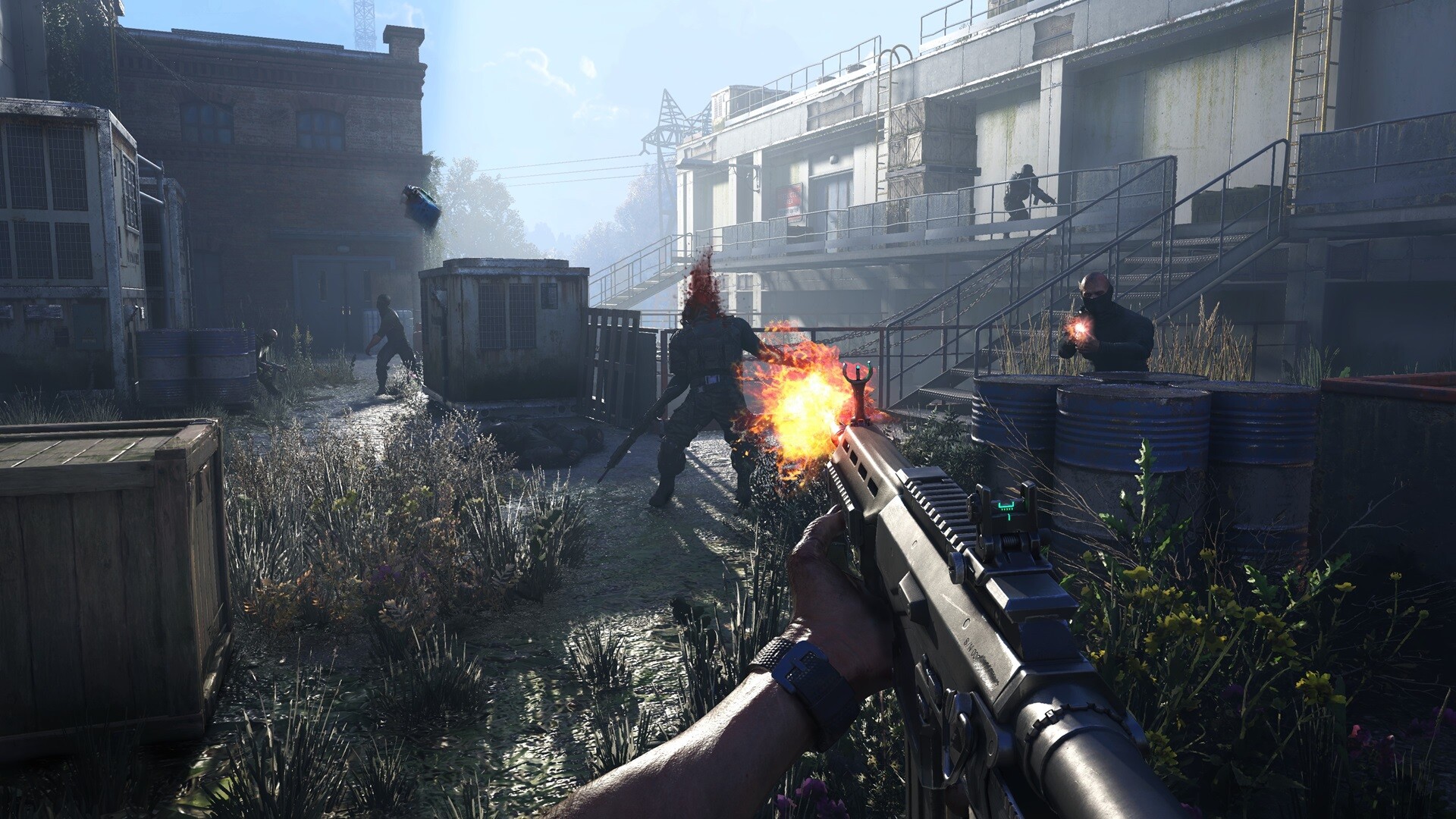It doesn’t seem like Techland’s post-launch plans for Dying Light 2 Stay Human are done just yet, though the studio has other irons in the fire as well. Next up for the zombie-slaying series is Dying Light: The Beast, a new standalone adventure starring the original game’s protagonist Kyle Crane, after having initially started development as DLC for Dying Light 2, before morphing into its own standalone project.
But why was that decision made? How has development progressed for the game behind the scenes? How will it differ from Dying Light 2’s action RPG offerings? What should players expect from the new map? Recently, we had the chance to ask Dying Light: The Beast’s developers about all of this and more. Below, you can read our interview with franchise director Tymon Smektala.
“We originally planned Dying Light: The Beast as the second DLC for Dying Light 2 Stay Human, but a significant narrative leak that we experienced in the second half of 2023 changed everything. Rather than risk spoiling the story for our most dedicated fans, we decided to act upon it and take a different approach.”
What prompted the decision to spin off Dying Light: The Beast as a standalone game, having started working on it as DLC for Dying Light 2?
We originally planned Dying Light: The Beast as the second DLC for Dying Light 2 Stay Human, but a significant narrative leak that we experienced in the second half of 2023 changed everything. Rather than risk spoiling the story for our most dedicated fans, we decided to act upon it and take a different approach. During discussions on what could make the project unique, we came up with the idea to bring back Kyle Crane. That idea sparked so much energy and creativity within the team that we quickly realized it could be something far bigger than “just a DLC”. That was definitely the turning point for us – we took a fresh approach, re-designed more than we initially anticipated, and started building Dying Light: The Beast as a full standalone game with new mechanics, a dedicated storyline, and an entire world for players to explore.
The return of Kyle Crane is something Dying Light fans have been waiting for for some time. What led to the decision to bring him back at this time, and what was the process like of figuring out where to take his story and how to reintroduce him to the world of Dying Light?
Kyle’s return came naturally out of our brainstorming for how we’d like to solve the challenge of the leak we experienced. Crane’s an iconic character for the Dying Light community, and we felt that bringing him back after all this time will also give us an opportunity to answer a lot of lingering questions from the first game. We wanted to show how he’d been affected by his years of captivity and experimentation, so he’s a very different Kyle—older, more haunted, and driven by a strong desire for revenge. The crucial aspect of this work was convincing Roger Craig Smith, the voice & “spirit” of Kyle, to get back to the character. It allowed us to explore this character in deeper ways, merging the traits fans know and remember from the first game with new elements reflecting the trauma he’s endured.
Of course, playing as Kyle Crane in Dying Light: The Beast will also mean being able to unleash the unique powers he now has access to. Can you talk a bit about that and how it will impact gameplay, especially in terms of combat?
Absolutely. Kyle’s new powers are the result of experiments conducted on him during his captivity. These beast-like powers make him stronger, faster, and give him brutal new ways to take down enemies, which makes combat feel visceral and intense. But these powers aren’t always accessible. They’re a resource you’ll need to manage, using them strategically at critical moments rather than relying on them constantly.
“With Dying Light: The Beast we wanted to deliver a focused, emotional story that could explore Kyle Crane’s journey in a powerful way. By following a linear narrative, we could create impactful, story-driven moments that wouldn’t have the same force in a branching structure.”
You’ve said that Dying Light: The Beast is going to be less of an RPG than Dying Light 2 was, with choice and consequence mechanics also being dropped in favour of a linear story. Can you talk about why you chose that direction for this game? Should fans also assume that this is indicative of where you want to take the series in the future?
With Dying Light: The Beast we wanted to deliver a focused, emotional story that could explore Kyle Crane’s journey in a powerful way. By following a linear narrative, we could create impactful, story-driven moments that wouldn’t have the same force in a branching structure. This approach also allows us to tie together the lore of both Dying Light and Dying Light 2 Stay Human, giving players answers they’ve wanted for years and setting the canon. As for the future, we’re always open to different formats, but for Dying Light: The Beast, we felt this linear approach best suited the story we wanted to tell.
What can you tell us about the new setting of Castor Woods? What should players expect from it in terms of its size and environmental diversity?
Castor Woods is an intense, atmospheric setting – a rural, forested valley with few diverse biomes, ranging from national park to industrial areas. It’s smaller than the map of Dying Light 2 Stay Human, but it’s much more detailed, designed to make exploration rewarding at every turn. There’s a strong emphasis on environmental storytelling, with secrets, hidden paths, and lore woven into the landscape, each part of the map handcrafted by our artists. There are lots of mysteries hidden in this world, some going back in many many years, and we hope players will find themselves immersed in this eerie, desolate world and will have fun discovering it.
In terms of design, Castor Woods is looking like a less urban setting than what Dying Light fans might usually be used to. How will that impact gameplay, especially where parkour and traversal are concerned?
Parkour is central to the Dying Light franchise, so we knew we had to keep it even if the environment is different. The idea was that even if there are less structures, buildings to climb over and run through, we decided to make every one count – so there’s almost no buildings that you can just enter through the main door. To reach anywhere you need to use the agility of the main character. On top of that we’re also adding an opportunity to drive vehicles and this helps to travel between areas which have a bigger density of parkour obstacles and opportunities. But no matter the form of transportation – either it’s by foot or by car – it’s still the dynamic traversal our fans like a lot, just adapted for this unique environment.
“Dying Light: The Beast leans heavily into survival horror.”
Dying Light has always made horror a pivotal part of its experience. How heavily will The Beast lean into that side of things?
Dying Light: The Beast leans heavily into survival horror, particularly at night, when the danger and tension reach new levels. We focused quite some time on tweaking and upgrading the behavior of our apex predators, Volatiles, to make them scarier and more menacing. Additionally, in the day parts of the game, we wanted to recapture the feel (and fear!) of the early hours of the original Dying Light, where survival is uncertain, and every encounter, even with a simple enemy, could be your last. With more aggressive zombies, with the intense atmosphere, with the immersive visuals – players will really need to be cautious, resourceful, and strategic to survive.
Can you tell us how the experience will scale and change when played co-op as opposed to when it’s played solo?
We’re trying to keep the intense survival feel of Dying Light: The Beast intact in the co-op mode, but of course it’s harder when you have up to 4 players fooling around. Coordinating with friends can make it easier to handle large groups of zombies, so to keep the challenge we scale enemy difficulty to match. There are a few behind the scenes mechanisms that make it so the group is encouraged to stay together, as separating in co-op sessions, while sometimes needed, is always a blogger threat.
Dying Light: The Beast is being described as an 18-hour-plus experience, but does that runtime include optional content, or is that for the main story only?
That 18-hour estimate is for what we call the core playthrough, a regular experience with the game, where you complete the game, but also play with side quests and additional content. It’s very hard to measure the length of an open world game, as usually there’s plenty of optional content, side activities, and secrets to discover – especially with the rich detail we’ve put into Castor Woods – and each player takes that all in differently, depending on his preferences and playstyle.
Are there any plans to make the game PS5 Pro enhanced?
We’re definitely keeping the latest hardware in mind. We want to make sure Dying Light: The Beast takes advantage of everything the PS5 Pro has to offer, but we’ll be sharing more about specific enhancements closer to launch. We already had our first attempt at this by adding some improvements to Dying Light 2 Stay Human but for Dying Light: The Beast we definitely want to take it much, much further.
“We want to make sure Dying Light: The Beast takes advantage of everything the PS5 Pro has to offer, but we’ll be sharing more about specific enhancements closer to launch.”
As a developer, what are your thoughts on the PS5 Pro? How does boost in GPU help in developing your game compared to the base PS5?
We’re just starting to discover the full capabilities of PS5 Pro but it’s already exciting as it gives us a lot more flexibility with graphics and performance. The boost in GPU will allow us to push visual fidelity, especially with complex environmental details like weather effects which are very core to Dying Light: The Beast experience. This kind of power also means generally smoother gameplay at higher resolutions, and that’s something very important for a game like ours, where highest level of immersion is of utmost importance.
What are your thoughts on PSSR? What kind of opportunities will this open for the game?
Sony’s PSSR is a substantial push for the supersampling tech that other companies are experimenting with as well. It’s a great initiative as in the future this can allow developers to focus slightly less about performance being able to have bigger creative liberty. If what Sony is proposing will become a new standard then PSSR could potentially turn out to be even more important than the direct increase in GPU power that the console delivers.
What resolution and frame rate will the game target on the PS5, Xbox Series X and S, and on the PS5 Pro?
It’s too early to confirm such details at this time as the final optimization pass usually happens right before the release, but please stay tuned as we’ll be revealing them closer to the launch.






Comments are closed.